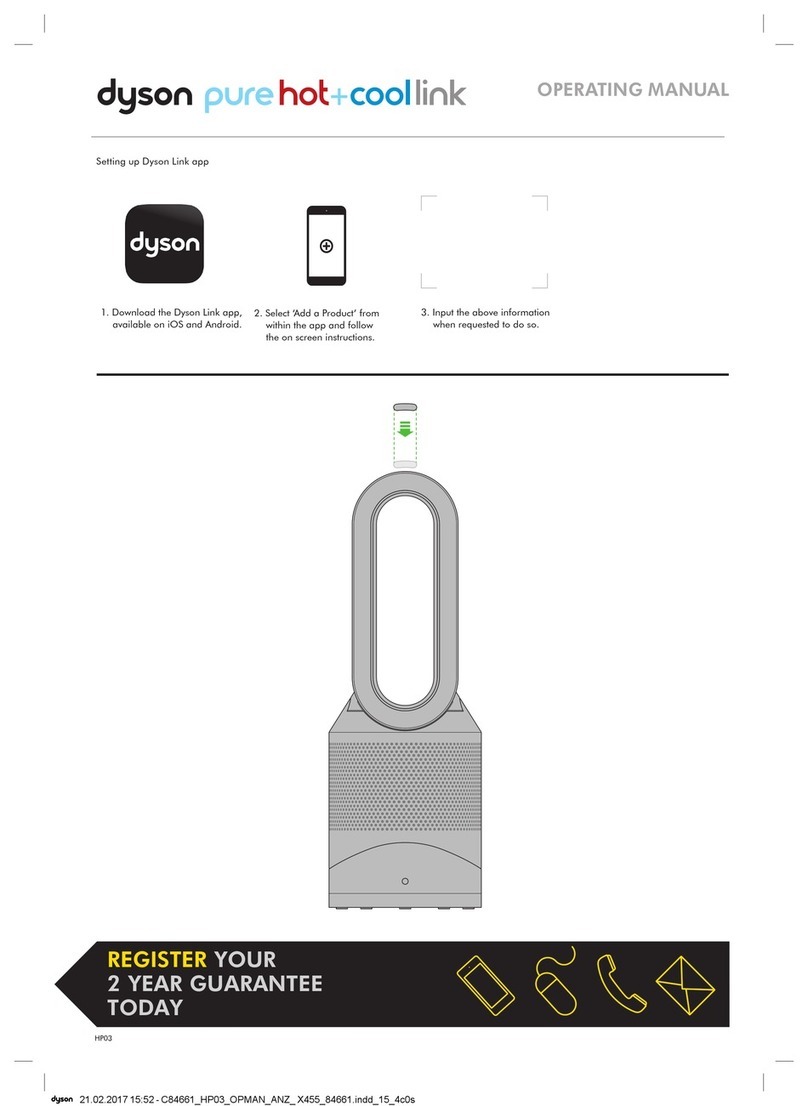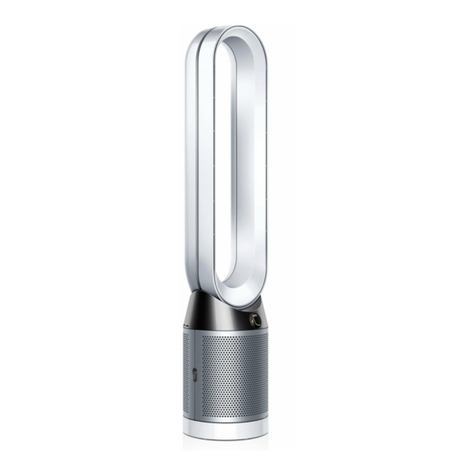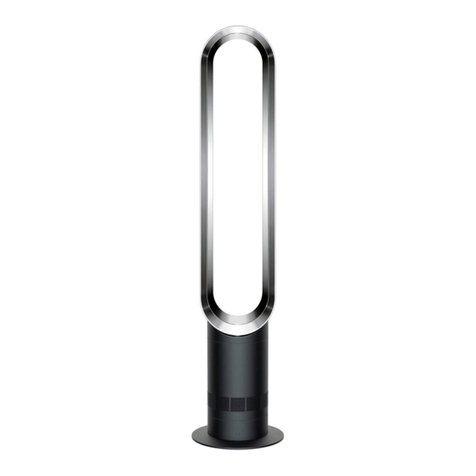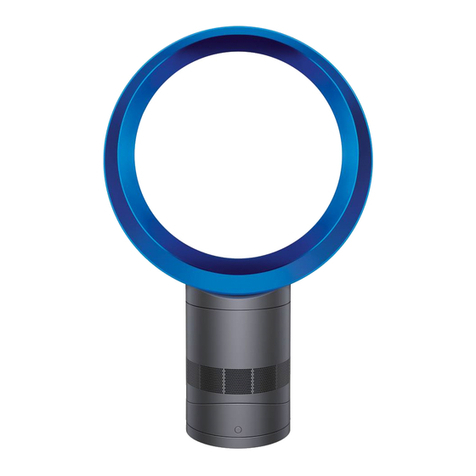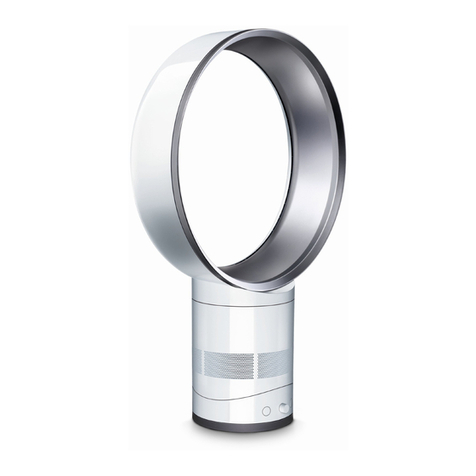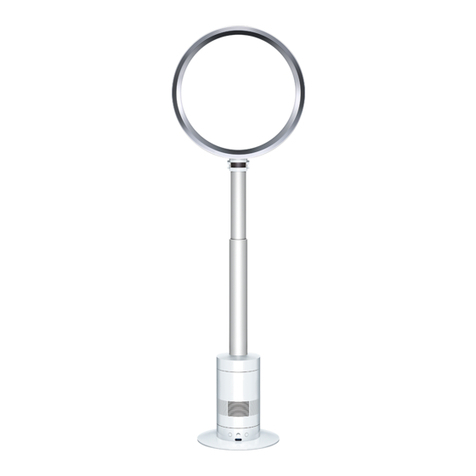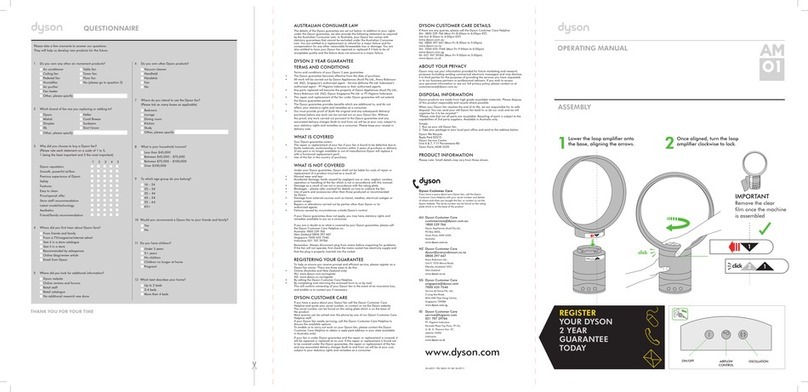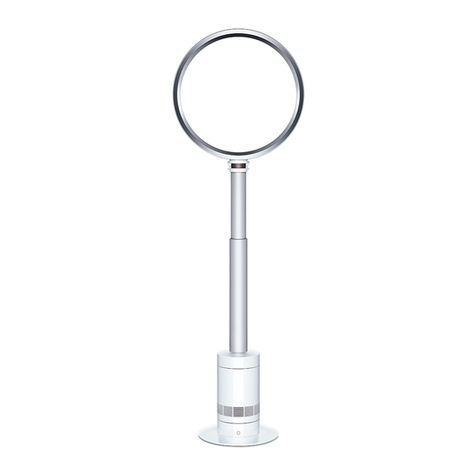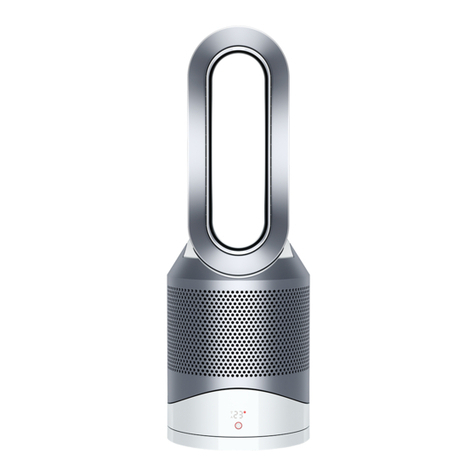
7
GB
ROI
IN
JM
MT
PH
SG
Pre-installation checks
Fig. A
Pre-installation planning
The Dyson Airblade Wash+Dry hand dryer
is designed so that the motor unit is wall
mounted and located under the basin Fig. A(i).
The fitting of an inline filter is advised
to prevent any damage that may affect
your guarantee.
– Allow sufficient access space for installation
and servicing, see Fig. A(ii).
– The unit is designed for a dry, internal
location only.
– Consult local and national accessibility
codes and regulations for relevant
installation guidelines. Conformity and
compliance is the responsibility of the
installer. Make sure that the unit is installed
in compliance with all building codes and/
or regulations.
– A means for all-pole disconnection must
be incorporated into fixed wiring, in
accordance with local wiring regulations.
– Isolate the power and water supplies before
installation or service.
– Ensure no pipe work (gas, water, air)
or electrical cables, wires or ductwork
are located directly behind the drilling/
mounting area.
– Dyson recommends the use of protective
clothing, eye wear and materials when
installing/repairing as necessary.
– This appliance is intended to be
permanently connected to the water mains.
Use in food preparation areas
For food preparation environments special
installation is required, which must fully
enclose the motor bucket and hose in a
cleanable housing or have the motor bucket
on the reverse side of a wall, provide adequate
clearance for cleaning underneath (if
applicable) and be such that the unit is at least
2.5 metres from uncovered food or uncovered
food-contact surfaces.
Refer to the sink recommendation guide at
www.dyson.com prior to install.
Fig. B
Sink specification guidelines
Using a specially designed test method,
Dyson engineers tested a wide range of
sinks to assess their compatibility with the
Dyson Airblade Wash+Dry hand dryer.
For recommended sinks, please use our guide
at www.dyson.com.
Porcelain or brushed metal sinks are ideal.
Sinks with highly polished surfaces should be
avoided e.g. reflective chrome.
For minimum sink dimensions refer to Fig. B.
Fig. C/D/E
Tap mounting
There should be a minimum of 100mm and a
maximum of 155mm from the top of the sink
to the tap centre Fig. C.
There should be a minimum of 290mm
between a tap centre and a side wall.
When multiple taps are installed side-by-
side, tap centres should be a minimum of
580mm apart. This allows sufficient space
for mounting the motor bucket, as well as
sufficient shoulder room for users Fig. D.
Do not place the downward facing water
sensor of the tap over a reflective surface, such
as the drainage hole Fig. E.
Fig. F
Soap and locating the soap dispenser
For best user experience, Dyson recommends
the use of gel soap.
The infrared sensing zone for air activation
extends along each tap branch. In order to
prevent accidental activation, it’s important
to consider the user’s hand route to the
soap dispenser.
The dispenser should be located at least
60mm outside the width of the tap, so the user
reaches around the side of the branch.
It should also be located at least 60mm
above the branches, so that the sensors are
not activated.
Please note that the user may reach diagonally
across for the soap, so this path must not go
through the sensing zone.
Fig. G/H
Water drainage
Due to high velocity air and water being in
close proximity, there is a chance of some
water and soap dispersion outside the
sink dimensions. To alleviate this effect, we
recommend following the guidelines below.
Base Profile
Flat base profile will result in poor drainage
leading to high levels of splashback.
To improve drainage, avoid sinks with a flat
base with particular focus on the immediate
area surrounding the drain hole, minimum
60mm radius Fig. G.
Minimum of 6° ramp angle from the edge
of the drain hole of the sink will result in
good drainage leading to reduced levels of
splashback (minimum 60mm radius) Fig. H.
Fig. I/J/K
Base to back and front wall transition
The base to back and front wall transition
should also be considered. The back wall
should be as close to 90°, and at as sharp a
radius as possible Fig. I. Curved geometry
is more likely to increase splashback
Fig. J, whereas sloping back and front wall
transitions should be avoided Fig. K.
Fig. L
Plug hole
Plug holes with the most open aperture are
recommended, whereas grill or perforated
type plug holes should be avoided as they
restrict the drainage of soapy water (lather).
Do not use plugs within the plug holes in sinks.
Fig. M
Water temperature control
If you are connecting a hot and cold water
feed you will need to install a blender valve.
If connecting to cold only water feed you will
need to install a heater.






